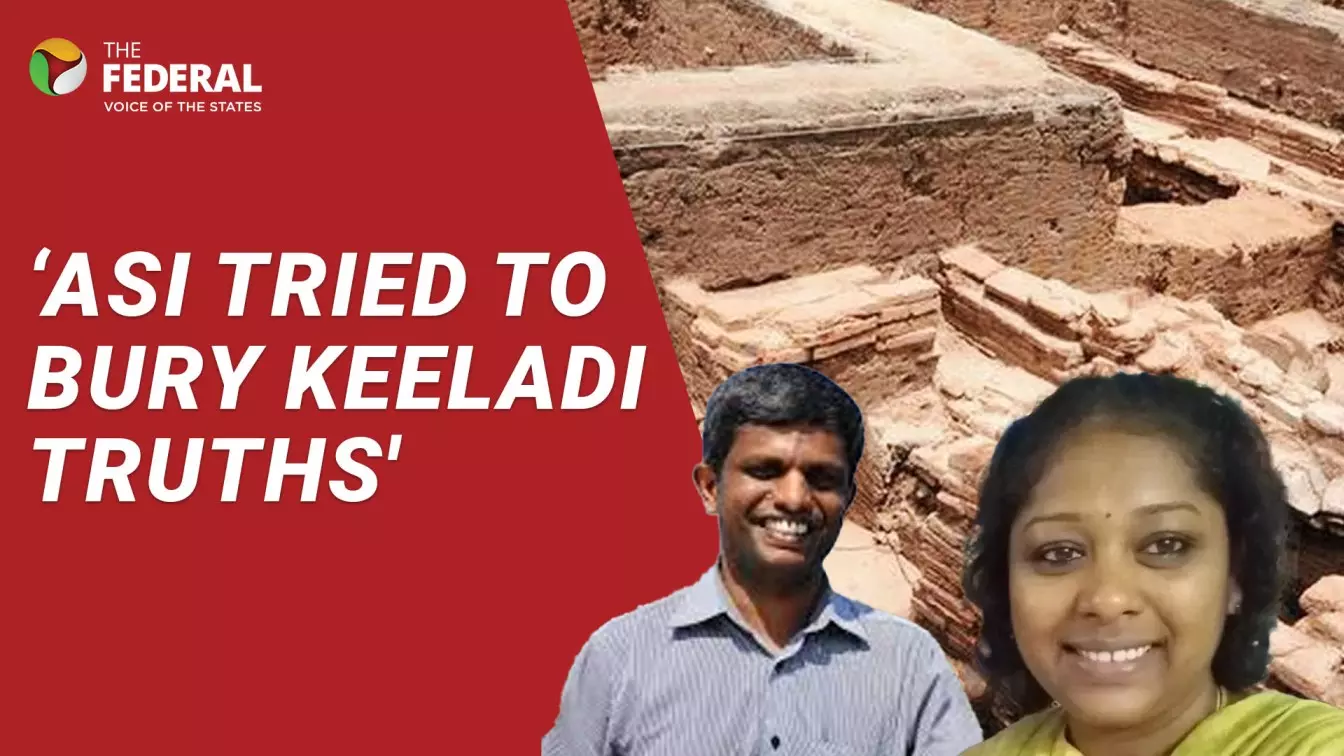
Peer Mohammed opens up on the brewing controversy surrounding the Keeladi excavation site in Tamil Nadu.
Is ASI wary of Keeladi? Interview with journalist Peer Mohammed
Keeladi proves a 2,600-year-old Tamil civilisation. So why did ASI shut it down?

The Keeladi excavation site in Tamil Nadu has become a flashpoint in the larger debate on historical narratives, regional identity, and federal politics. As the state archaeology department and the Archaeological Survey of India (ASI) clash over control and interpretation of findings, questions emerge on the politicisation of history.
Veteran journalist Peer Mohammed joins The Federal to unpack what lies beneath the soil—and the silence.
What does it mean that the Tamil Nadu state archaeology department has found a new structure in Keeladi after ASI halted its excavation?
In 2017, it became evident that Keeladi was the site of an ancient Tamil civilisation on the banks of the Vaigai and Perunai rivers. But in its usual style, the ASI halted the excavation abruptly. The officer who replaced archaeologist Amarnath Ramakrishna—Sriraman, also from the ASI—claimed there was nothing significant to be found.
However, during Ramakrishna’s tenure, 5,888 artifacts were unearthed and are still safeguarded in the museum. Since then, over 14,000 artifacts have been found across the same three excavation sites. That’s a massive amount of material history coming to light.
Despite all this, the ASI, or more accurately those controlling it from the Union government, seem invested in a narrative that denies or diminishes the significance of Tamil Nadu and Tamil civilisation. There is a clear attempt to suppress what is being discovered daily in Keeladi, even though the scientific evidence points to a thriving civilisation that existed 2,600 years ago.
How do you view ASI’s prioritisation of excavation projects in southern India versus those in the north?
The ASI’s approach is clearly biased. There’s a dominant narrative they want to impose—“one culture, one India.” This idea gets reinforced with projects like the Saraswati river paleo-channel explorations, which are given far more importance than southern sites like Keeladi.
There are many ancient civilisations across the present-day Indian landscape. Why hide or cover up findings when they’ve been scientifically validated? In Tamil Nadu alone, we have significant sites like Adichanallur, Sivakalai, and Kodumanal, and now even excavations near the Noyyal river.
Yet the government has appointed Sriraman, a retired ASI official, to cross-check Ramakrishna’s excavation report. What kind of politics is this? When you have hard evidence, the right course is to acknowledge and move forward—not suppress.
But what we are witnessing is petty politics by the Union government, purely because these excavations are happening in Tamil Nadu. It reflects a clear discrimination against South India and Tamil culture.
There are reports of disproportionate funding to Sanskrit versus Tamil in recent RTI disclosures. What does that say about the government's cultural approach?
Through an RTI, we recently found that Sanskrit was allotted around ₹2,500 crore, while Tamil received a meagre ₹110 crore. This kind of disparity reveals the bias loud and clear. When you do this, you cannot claim to be a neutral state actor.
The government is constantly playing politics. Tamil is very much a part of India—an ancient, rich, and significant part. If you want to take India forward, the only path is by acknowledging the plurality of its civilisations. But that’s not happening. What we see instead is a narrow political prism, one that doesn’t serve India or its people.
The content above has been transcribed from video using a fine-tuned AI model. To ensure accuracy, quality, and editorial integrity, we employ a Human-In-The-Loop (HITL) process. While AI assists in creating the initial draft, our experienced editorial team carefully reviews, edits, and refines the content before publication. At The Federal, we combine the efficiency of AI with the expertise of human editors to deliver reliable and insightful journalism.

